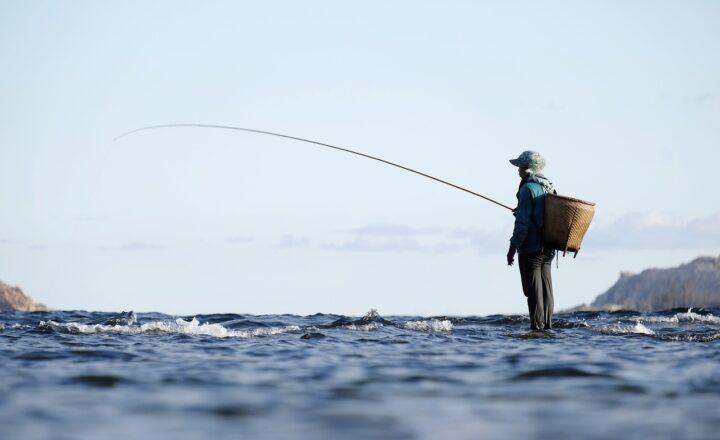The Evolution of Fishing Gear: How Technology Is Transforming the Sport
November 11, 2024

Fishing has long been a beloved pastime and essential means of livelihood. From ancient times, humans have crafted tools and techniques to catch fish, thereby adapting to ever-changing environments. However, as technology progresses, so too does the gear used for fishing. In this article, we will explore the evolution of fishing gear, examining how modern innovations are transforming the sport and enhancing anglers’ experiences.
1. The Early Days of Fishing Equipment
Fishing began with simple tools. Ancient civilizations used wooden spears, nets woven from natural fibers, and hooks carved from bone or shell. These rudimentary tools were effective for sustenance, and their designs were refined over centuries.
Key characteristics of early fishing gear included:
- Natural Materials: Early fishermen crafted tools from wood, bone, and plant fibers, emphasizing resourcefulness and sustainability.
- Basic Techniques: Methods included hand fishing, net casting, and spearfishing, often adapted to local environments.
- Community Knowledge: Fishing practices were passed down through generations, often resulting in region-specific tools and techniques.
As societies evolved, so did their fishing practices, leading to greater needs facilitated by advancements in technology.
2. The Industrial Revolution: A Turning Point
The Industrial Revolution marked a significant turning point in the evolution of fishing gear. Mass production methods enabled the creation of more sophisticated tools. Key advancements included:
- Metal Hooks: Instead of bone and wood, fishermen began using strong, corrosion-resistant metal hooks, which improved catch efficiency.
- Fishing Rods and Reels: The introduction of rods and reels revolutionized fishing by allowing greater distance and precision while casting lines, paving the way for recreational fishing.
- Commercial Fishing Gear: The rise of the fishing industry led to the development of commercial nets, trawlers, and processing equipment for large-scale operations.
These innovations marked a shift from subsistence fishing to fishing as a sport and major industry, forever changing the way people interacted with water bodies.
3. The Technological Revolution in Fishing Gear
The 20th and 21st centuries ushered in an era of rapid technological advancement, impacting nearly every aspect of fishing. Some notable breakthroughs include:
- Fish Finders and Sonar Technology: With the advent of sonar technology, fishermen can now locate fish more efficiently. Instant data on depth, water temperature, and fish size has transformed the fishing experience and increased catch rates dramatically.
- Smartphone Apps: Mobile applications designed for anglers provide weather conditions, tide charts, and suitable fishing spots, bridging the gap between technology and traditional fishing methods.
- High-Tech Rods and Reels: Modern materials, such as carbon fiber and aluminum, have enabled the creation of lightweight, durable rods and reels featuring advanced drag systems and precise line management features, enhancing performance for all types of anglers.
These technological advancements have transformed not only how anglers fish but also how they interact with nature, leading to increased opportunities for education and conservation awareness.
4. Sustainable Fishing Gear: A Rising Trend
As awareness about environmental sustainability grows, there is an increasing push towards eco-friendly fishing gear. Innovations in this space include:
- Biodegradable Fishing Lines: Companies are developing lines made from biodegradable materials that minimize environmental damage if lost in water, addressing concerns about plastic waste.
- Recycled Materials in Gear Production: Fishing equipment manufacturers are increasingly using recycled plastics and metals to reduce their ecological footprint, appealing to environmentally conscious consumers.
- Sustainable Practices: Organizations and brands are promoting sustainable fishing practices that protect fish populations and habitats, ensuring the longevity of the fishing industry itself.
Sustainability is not just a trend; it represents the future of fishing gear as both companies and consumers become more cognizant of their impact on aquatic ecosystems.
5. The Future of Fishing Gear
As technology continues to evolve, fishing gear will undoubtedly become even more advanced. The future may include:
- Smart Fishing Gear: Innovations like smart lures that can mimic species’ movements, or wearables that monitor your heart rate and activity levels while fishing, could soon be commonplace.
- Integration of AI and Machine Learning: AI-driven tools could analyze data from past fishing trips, predicting the best fishing spots, times, and conditions based on historical trends and personal fishing records.
- Enhanced Virtual Reality Experiences: Virtual reality could redefine fishing simulations, allowing enthusiasts to practice their skills in a controlled environment or experience remote fishing locations without leaving home.
These exciting innovations will enrich the fishing experience for both recreational and professional anglers, making the sport more accessible and engaging than ever.
Conclusion
From humble beginnings with natural materials to the sophisticated technology of today, the evolution of fishing gear illustrates humanity’s continuous drive for innovation while maintaining a connection with nature. As we look to the future, the advancements in fishing technology will not only improve our angling experiences but also challenge us to be more responsible stewards of our shared aquatic ecosystems. By embracing sustainability and technology, we can ensure that fishing remains a cherished tradition for generations to come.








